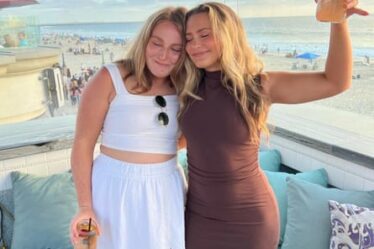
When she was four, Barbara Earth injured herself in the basement of the family home. Imprinted on her memory, along with the hurt, is the understanding that she had to scream really loudly “because my mother wouldn’t hear”. Her mother’s hearing loss took place over many years, and Earth grew up knowing that the same might happen to her. “I saw my mother’s experience,” she says. “So much loss and pain. And I decided: I am not doing that.”
In a sense, Earth, an academic, has prepared all her life for her own possible future deafness. She was 27 when a screening identified hearing loss, but the loss was gradual, so “it’s not easy to define when I stopped being able to hear,” she says. Her work and travels have taken her to 33 countries. In her 50s, she taught at a college in Thailand, but hearing students’ questions had become “impossible”. Life was “an increasing struggle”.
Earth decided that if she were to spare herself the loneliness and pain she had witnessed in her mother, she needed to act. So she moved from Thailand to Hawaii to learn American Sign Language (ASL) and now, with her 60th birthday some way behind her (she does not want to give her exact age to avoid discrimination when looking for work), she has reached “a functional level”.
The language is “very hard”, she says over video-call via an ASL interpreter (a colleague in her new job at the Rochester Institute of Technology (RIT), New York), much harder than Swahili, which she learned while doing a doctorate in Tanzania in her 40s. “There is a huge difference in the sign language of someone who is born deaf. I don’t have those connections from my brain to my hands and eyes.” Finger-spelling is difficult. “The hand movements are so subtle. I often can’t catch it,” she says.
Along with learning a new language, Earth has spent the past decade or more placing herself in a community. After the ASL course, she became a graduate student at Gallaudet university, Washington, which has a bilingual approach to learning, then worked on a history of deaf people in Hawaii. One deaf woman Earth visited in the nursing home “cried and cried because no one signed there”. Earth realised: “I need to be around other deaf people.”
For a long time, even in her 50s, Earth could still hear some sounds: low frequencies, “garbled and meaningless”. But a few years back, those went too. “I was very frightened,” she says. “I felt my ears close for the last time. Any sound grounds you. I felt like I was floating; nothing firm.”
Last year, Earth, who at the time was living in Athens, Ohio, decided to start “a new life”. She was the only deaf person in the town. “I felt alone,” she says. She had cared for her father for five years, despite the challenges of communicating with care professionals. When he died at 99, she applied to the Deaf Hub at the National Technical Institute for the Deaf at RIT, where she has started a postdoctorate in reproductive health experiences.
“My colleagues are all deaf and ASL is used for everything,” she says. “It’s like a second life. I learn more, I sign more. It’s progress.” Not having grown up with sign language means “it’s very easy to feel like an outsider. But not here,” she says. “Everyone’s different, and they value diversity.”
Earth has “always accepted challenges and jumped into adventures”. As a child, she owned a globe. “I would spin it and try to imagine the place where my finger landed.” Her determination from a young age to be prepared for what lay ahead has brought restrictions, however. “Knowing I was going to be deaf prevented me from getting really involved with partners,” she says. “Not getting married, or something like that.”
Earth had moved to Hawaii with her long-term partner, only to realise that the relationship had run its course. “That was really painful,” she says. And old friendships with hearing friends are “not the same” – they inhabit different sensory worlds, different social realities. She has a daughter, two grandsons, and a dog, Lovie, who listens out for her, and lets her know when the microwave beeps or the postman calls.
Learning is an ongoing project for Earth. “Sometimes you just have to jump in,” she says. “And don’t be afraid, because what’s the worst that can happen? You go back. Or you start something else.”


